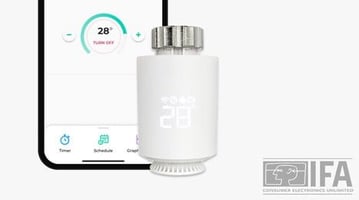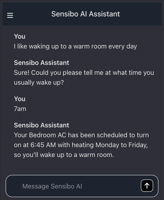How to Improve Indoor Air Quality in Schools? Tips for Teachers
Key Takeaways
- Simple ventilation strategies cut indoor pollutants by up to 29% - no admin approval needed
- Smart classroom organization and source control fix common air quality problems for free
- HEPA air purifiers slash airborne contaminants by 41% and boost attendance
- Keep classroom temps between 68-74°F for peak student brain power and focus
- Regular monitoring spots air quality issues before they tank learning outcomes
Students spend approximately 900 hours each year breathing classroom air that's 2-5 times more polluted than outdoors. Poor indoor air quality in schools hits cognitive performance, test scores, and attendance hard. Sure, major HVAC upgrades need admin approval and big budgets, but teachers can transform their classroom environments right now. Research shows strategic ventilation improvements alone cut indoor pollutants by 29%. Mix several approaches together? Even better results for student health and academic success.
Understanding Indoor Air Quality in Schools
Classrooms face tough challenges that make indoor air quality in schools a big deal. Picture this: classrooms pack in four times more people per square foot than office buildings. That creates concentrated sources of carbon dioxide, respiratory droplets, and airborne nasties.
Common classroom pollutants? VOCs from art supplies and cleaning products, particulate matter from chalk dust and outdoor sources, biological stuff like mold and dust mites, plus sky-high carbon dioxide from all those kids breathing in tight spaces. These pollutants pile up fast in poorly ventilated areas.
Here's the kicker - better air quality in schools actually boosts brain function. Studies show 8% improvement in academic performance when ventilation rates doubled. Students in well-ventilated classrooms crush math and reading tests compared to those stuck in stuffy spaces.
Red flags for poor air quality: musty smells that won't quit, dust everywhere, kids complaining about headaches or feeling wiped out, windows fogging up from too much humidity, and more coughing and sniffling around the room.
Immediate Steps Every Teacher Can Take
Teachers can roll out several free strategies that improve classroom air quality immediately. No admin approval required - just do it and see results within days.
Smart window operation creates cross-ventilation that actually works. Crack open windows on opposite sides of your classroom, even just a little. This sets up airflow patterns that dilute indoor pollutants. During nice weather, keep windows partially open all day to slash carbon dioxide by 30-50%.
Furniture placement matters more than you'd think. Move desks, bookshelves, and storage away from air vents. Teachers accidentally block ventilation all the time - using supply vents as bulletin boards or covering return ducts with posters.
Cut the clutter for two big wins: better air circulation and easier cleaning. Stuff piled on surfaces collects dust and makes it tough for custodians to clean properly. Get students involved in organizing supplies - creates cleaner environments that help everyone breathe easier.
Plants help a bit with air purification, but keep expectations realistic. A few plants won't dramatically cut carbon dioxide, but peace lilies and snake plants can tackle certain pollutants. Just water them right to avoid moldy soil.
Keep classroom doors open during transitions when security allows. Encourages air exchange between spaces and cuts pollutant buildup.
Optimizing Your Classroom's Ventilation System
Most classrooms have unit ventilators or connect to central HVAC systems. Teachers can optimize these without calling maintenance.
Thermostat tricks make a huge difference. Set the fan to "ON" instead of "AUTO" for continuous air circulation, even when heating or cooling takes a break. This constant air movement dilutes pollutants and keeps air quality steadier all day.
Talk to facilities regularly about ventilation maintenance. Report weird noises, weak airflow, or temperature problems fast. Try this simple test: hold tissue paper near air vents to check for suction or airflow. Spots problems before they wreck classroom conditions.
Filter maintenance affects air quality and system efficiency. Teachers usually can't change HVAC filters themselves, but knowing replacement schedules and pushing for timely changes keeps systems running right.
.jpg?width=800&height=400&name=photo_2025-01-17_20-42-05%20(1).jpg) Temperature Control and Air Conditioning in Schools
Temperature Control and Air Conditioning in Schools
Classroom temps directly hit student brain power and comfort. Research pegs 68-74°F as the sweet spot for learning. Go outside this range? Concentration and achievement drop.
Air conditioning in schools does way more than temperature control. Modern HVAC systems filter incoming air, control humidity, and keep air circulation patterns healthy.
Seasons need different game plans. Winter often means fighting overheating more than staying warm, especially in older buildings with wonky temperature controls. Strategic window use becomes clutch during spring and fall when outdoor temps swing wildly.
Work with admin on temperature issues rather than just complaining. Document temp swings with thermometers and note how they match up with student behavior or performance. Gives you solid evidence for needed changes.
Have backup plans for extreme weather days when air conditioning in schools can't keep up with brutal heat or cold.
Smart Air Purification Solutions for Classrooms
HEPA air purifiers pack the biggest punch for immediate air quality improvements schools can buy. Studies prove properly sized units cut airborne contaminants by 41% and seriously reduce student absences.
Picking the right air purifier means understanding room size and how many people you're dealing with. Classroom air purifiers should deliver 4-6 air changes per hour for best results. Units with Clean Air Delivery Rates (CADR) that match or beat room volume get the job done.
Smart placement maximizes effectiveness without disrupting class. Keep units away from walls and furniture for unrestricted airflow. Don't put them right next to students - creates distracting air currents. Corner placement usually works best.
Key Features to Consider When Selecting Classroom Air Purifiers:
- HEPA filtration (removes 99.97% of particles 0.3 microns or larger)
- Noise under 50 decibels for classroom use
- Right CADR rating for room size
- Multiple fan speeds for different activities
- Filter replacement alerts for easy maintenance
- Energy-efficient for all-day operation
Maintenance is pretty simple: replace filters regularly and basic cleaning. HEPA filters last 6-12 months depending on use and local air quality. Many units have replacement indicators so you don't have to guess.
Source Control
Stopping pollutants before they get into classroom air beats trying to remove them later. Source control tackles common classroom stuff that wrecks indoor air quality in schools.
Smart storage cuts chemical emissions big time. Seal art supplies, cleaning products, and other materials in airtight containers to stop continuous off-gassing. Set up storage areas with good ventilation to isolate pollutant sources from where kids hang out.
Common Classroom Pollutant Sources to Address:
- Dry erase markers and art supplies with VOCs
- Scented cleaning products and air fresheners
- Food that attracts pests and creates smells
- Poorly stored chemicals and adhesives
- Strong-smelling personal care products
- Pet dander from classroom animals
- Dust from chalk and erasers
- Off-gassing from new furniture or carpeting
Low-VOC alternatives work just as well without trashing air quality. Water-based markers, natural cleaning products, and unscented supplies offer safer options while keeping education effective.
Food policies prevent pest problems and related air quality issues. Set clear rules about eating in classrooms, proper food waste disposal, and regular cleaning of eating areas.
Fragrance-free policies protect students with chemical sensitivities and asthma. Ask teachers and students to skip strongly scented personal care products.
Monitoring and Assessment
Regular monitoring helps spot air quality trends and prove improvements work. Simple tools give valuable data without eating up time or requiring tech expertise.
Carbon dioxide monitors are great for checking ventilation. Portable CO2 meters under $100 help track air quality all day. Readings consistently over 1000 ppm mean insufficient classroom ventilation needs fixing.
Get students involved in air quality awareness - creates learning opportunities while improving conditions. Simple activities like tracking daily readings or watching weather patterns that affect indoor conditions help students understand environmental health connections.
Visual and Sensory Air Quality Warning Signs:
- Persistent musty or chemical smells
- Stuffy or stagnant air feeling
- Too much dust piling up on surfaces
- Window condensation from humidity problems
- Kids complaining about headaches or fatigue
- Visible mold around windows or walls
- More respiratory symptoms among everyone
- Trouble concentrating during certain times
Document everything to support requests for admin action when problems get too big for classroom fixes. Keep records of air quality measurements, student health complaints, and improvements you've made. Gives compelling evidence for facility upgrades or policy changes.
.jpg?width=800&height=400&name=photo_2025-01-17_20-42-22%20(1).jpg) Working with School Administration and Facilities
Working with School Administration and Facilities
Effective communication with school leadership means presenting clear, data-driven arguments. Focus on student outcomes, not personal comfort.
Build compelling cases for air quality in schools by connecting environmental conditions with educational performance. Present research linking better air quality with higher test scores, less absenteeism, and better student behavior. Helps administrators see the educational value.
Budget-conscious proposals acknowledge money constraints while presenting realistic alternatives. Suggest phased plans, grant funding opportunities, or teacher-led initiatives.
Build good relationships with maintenance staff. Regular communication about classroom conditions, appreciation for completed work, and constructive feedback helps create supportive partnerships.
Pilot programs let schools test improvements on smaller scales before major investments. Show success in individual classrooms to build support for broader implementation.
Special Considerations for Different Learning Environments
Older buildings present unique challenges. Historic structures often lack modern ventilation, making natural ventilation and air purification more critical.
Portable classrooms face particular challenges due to construction methods and ventilation limits. Often need more aggressive strategies, including dedicated air purifiers and enhanced natural ventilation.
Seasonal adjustments help maintain optimal conditions year-round. Summer focuses on managing heat and humidity, winter emphasizes maintaining ventilation without wasting energy.
Emergency protocols for poor outdoor air quality days protect students when external conditions compromise indoor environments. Wildfire smoke, high pollution days, or construction may require modified ventilation strategies.
FAQ
Can I improve classroom air quality without administrative approval?
Absolutely. Many effective strategies like smart window use, organizing furniture away from vents, and cutting clutter need no approval and deliver immediate benefits.
How do I know if my classroom has poor air quality?
Watch for persistent odors, stuffiness, student headache complaints, excessive dust buildup, or visible moisture problems around windows.
Are air purifiers worth the investment for classrooms?
Research shows HEPA air purifiers can cut airborne contaminants by up to 41% and significantly improve student attendance and performance.
What's the ideal temperature for optimal learning?
Studies show the optimal classroom temperature range is 68-74°F, which supports both cognitive performance and comfort for most students.
How often should classroom air filters be changed?
HVAC filters should typically be changed every 3-4 months during the school year, while portable air purifier filters need replacement every 6-12 months.
What should I do if my classroom ventilation system isn't working properly?
Document the issue with measurements and photos, submit a detailed work order to facilities, and implement temporary solutions like fans or strategic window opening.


































.jpg)

%20(1)%20(1)-min-1.jpg?height=200&name=image%20(60)%20(1)%20(1)-min-1.jpg)




